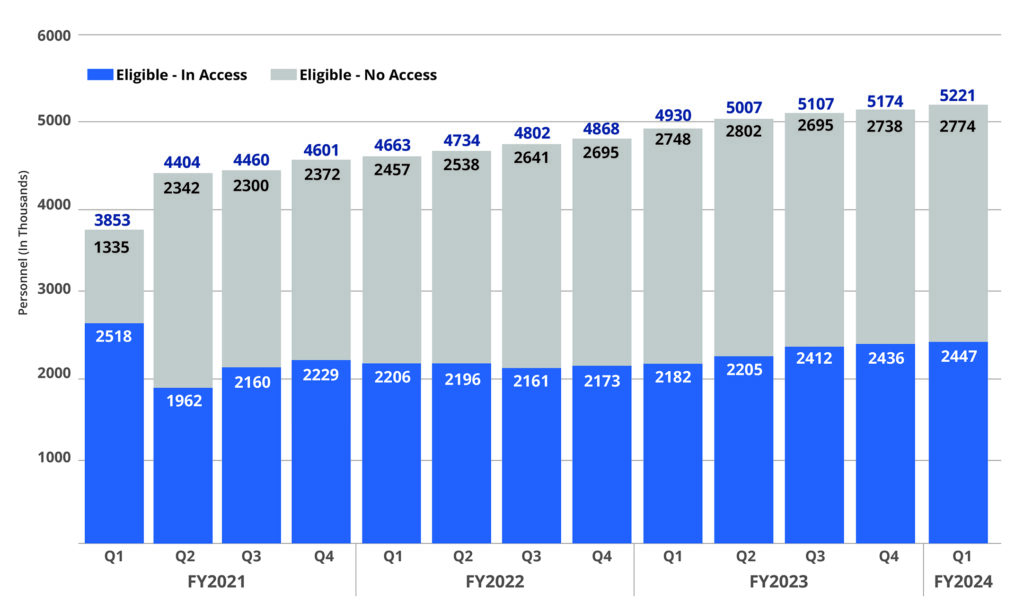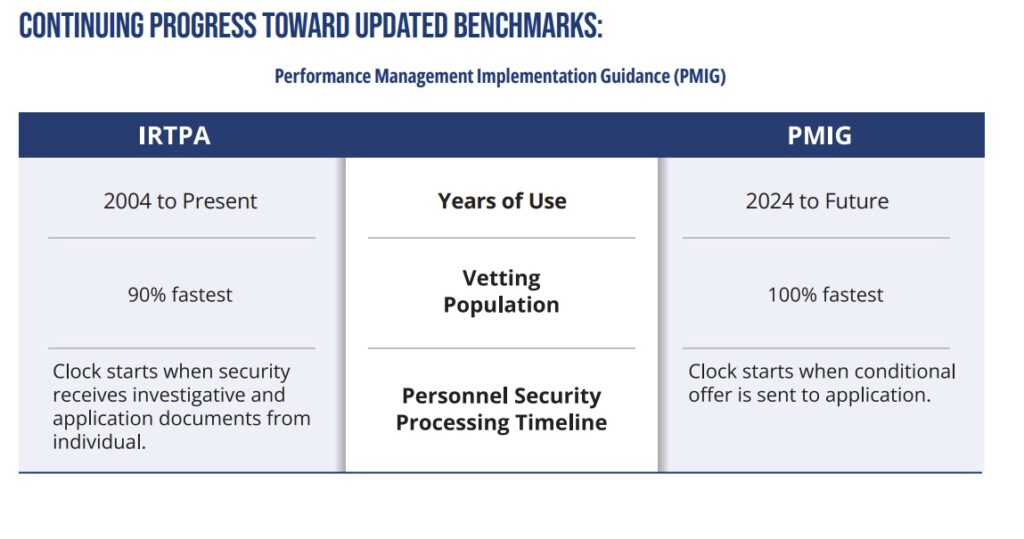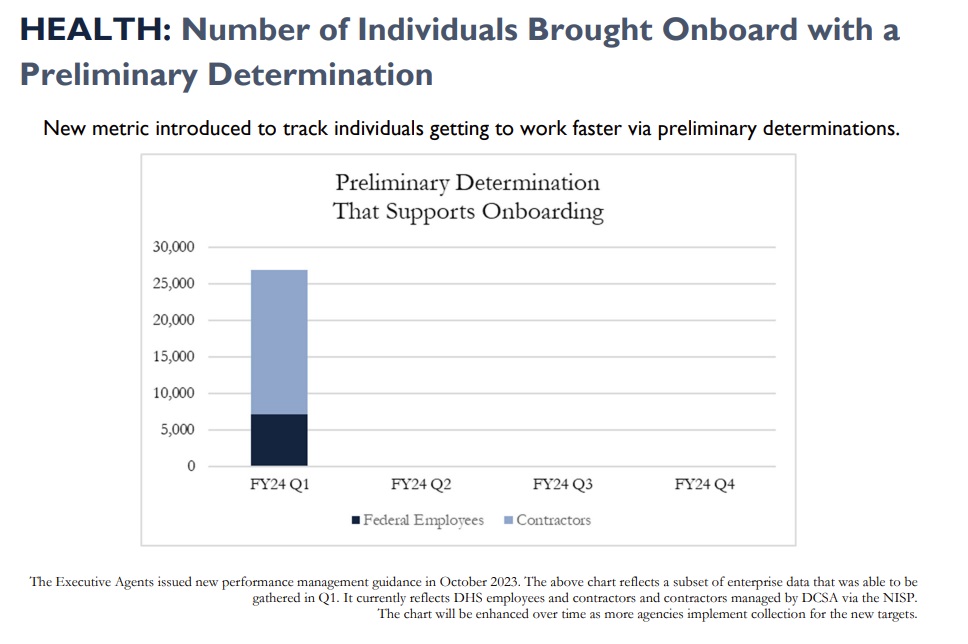You know the job will involve secrets after you get it, but why is the path to security clearance eligibility of so shrouded in mysteries of its own? That’s one of the myths the Performance Accountability Council Program Management Office (PAC/PMO) aims to bust through its Trusted Workforce 2.0 effort. The group released their Fiscal Year Q1 2024 update this week with new metrics and updates around onboarding and personnel vetting reform progress.
The government saw an increase in cases of 15% in 2024, but while the increased caseload caused an increase in pending inventory above the baseline and security clearance processing times increases, the number of cleared professionals remains below baseline, with just 2.4 million eligible/in access. The market dynamics around national security hiring continue to be difficult, and the process to obtain a security clearance cumbersome.

In 2023 the PAC PMO announced new goals. The Performance Management Implementation Guidance (PMIG) updates benchmarks to consider the full national security population, rather than reporting metrics for just the fastest 90% of cases. The Office of the Director of National Intelligence (ODNI) is still working on the PMIG and the path to full reporting.
The federal government also added a new benchmark to its most recent quarterly update – providing an overview of individuals who have been onboarded based on preliminary (interim) clearance determinations. Current statistics represent only Defense Counterintelligence and Security Agency (DCSA) industry and DHS applicants. Over time other metrics will be added to provide a broader picture of how the personnel vetting process ties with the overall goal of onboarding trusted talent more quickly, efficiently, and with the same focus on safety.
The overall candidate experience also continues to be emphasized in the Trusted Workforce 2.0 effort. eApp, a critical improvement in the initial application process, is now being used by 96.5% of all clearance applicants. In 2024, the PAC PMO aims to expand upon its research into key initiatives in personnel vetting reform, from AI, to diversity, and candidate experience. The research projects look to ways the personnel vetting process can advance. Seven new projects were chosen for FY 2024.
Adjusting NBIS timeline
An ongoing criticism by the Government Accountability Office (GAO) echoes something that has been said about the National Background Investigation Services (NBIS) for awhile – the timelines are made up and the dates don’t matter. In response to criticism of the integrated master schedule for NBIS, DCSA is updating major milestones including the March 2025 target for implementation of the three tier framework, the PAC PMO report notes.
Reforming the security clearance process isn’t an overnight success story. But small steps toward transparency and accountability can make a big difference.






